Dr Redzian Abdul Rahman from Raub, Malaysia, observed and documented the courtship and mating behaviour of the Coppersmith Barbet (Megalaima haemacephala) that we are presenting below. Where he lives, there is a small grove of banana and papaya plants by a river and there are “lots of birds, such as Yellow-vented Bulbul, Mynas, Glosy Starling, Black-nape Oriole, etc., a full list of which is given in his blog.
.
.
.
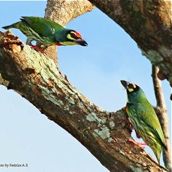
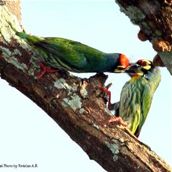
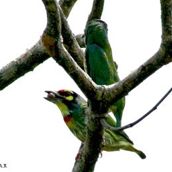
In the top image, the male flies in to perch near the female. He comes prepared with gifts and indulges in courtship feeding, a common ritual among many species of birds (above). The male in this case has a number of fruits in his gullet but he passes on only one to the female. Sometimes he may have to offer more than one, but not in this case. And at times the female may teasingly pass back the fruit to the male.
After courtship feeding comes copulation. With the next gift still in his bill, he carefully mounts her. With wings fluttering, he then maneuvers his tail so that his cloaca comes into contact with hers, a process that is termed the “cloacal kiss” (above). It is at this stage that sperms are transferred from the cloaca of the male to that of the female.
Immediately after the cloacal kiss, the male dismounts, the fruit still in his bill as the female has yet to eat his gift. Once she eats the fruit, he mounts her again, never offering her another gift (above). In a flash he completes his second cloacal kiss and flies off.
Immediately after the first pair completed their mating, another pair flew in and copulated (above). In this case the male did not even offer the fruit he had at the ready in his bill.
In the above image, note the everted cloacal opening of the female bird on the right, seen immediately after copulation. The male bird on the left still has his fruit in his bill, to be offered, no doubt, to his next partner.
Courtship activities may centre round the potential nesting cavity. The birds may indulge in a lot of singing, either simultaneous singing by the courting pair or duetting between males. Flight displays are common, with the male flying to perch besides the female, often with wings fluttering.
See an earlier account where the male barbet got three “bonks” for the price of two berries HERE.
Dr Redzian Abdul Rahman
Raub, Malaysia
February 2008


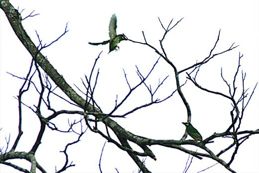
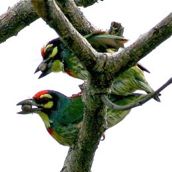
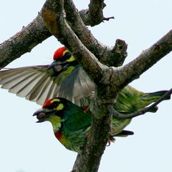
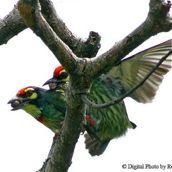
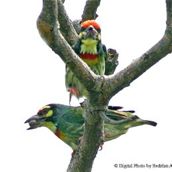
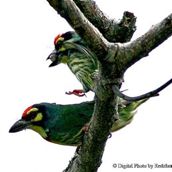
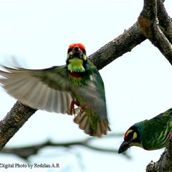
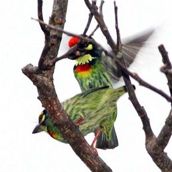
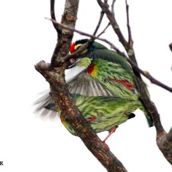
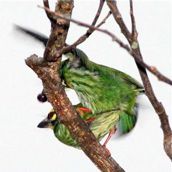
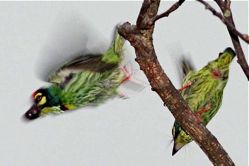







One Response